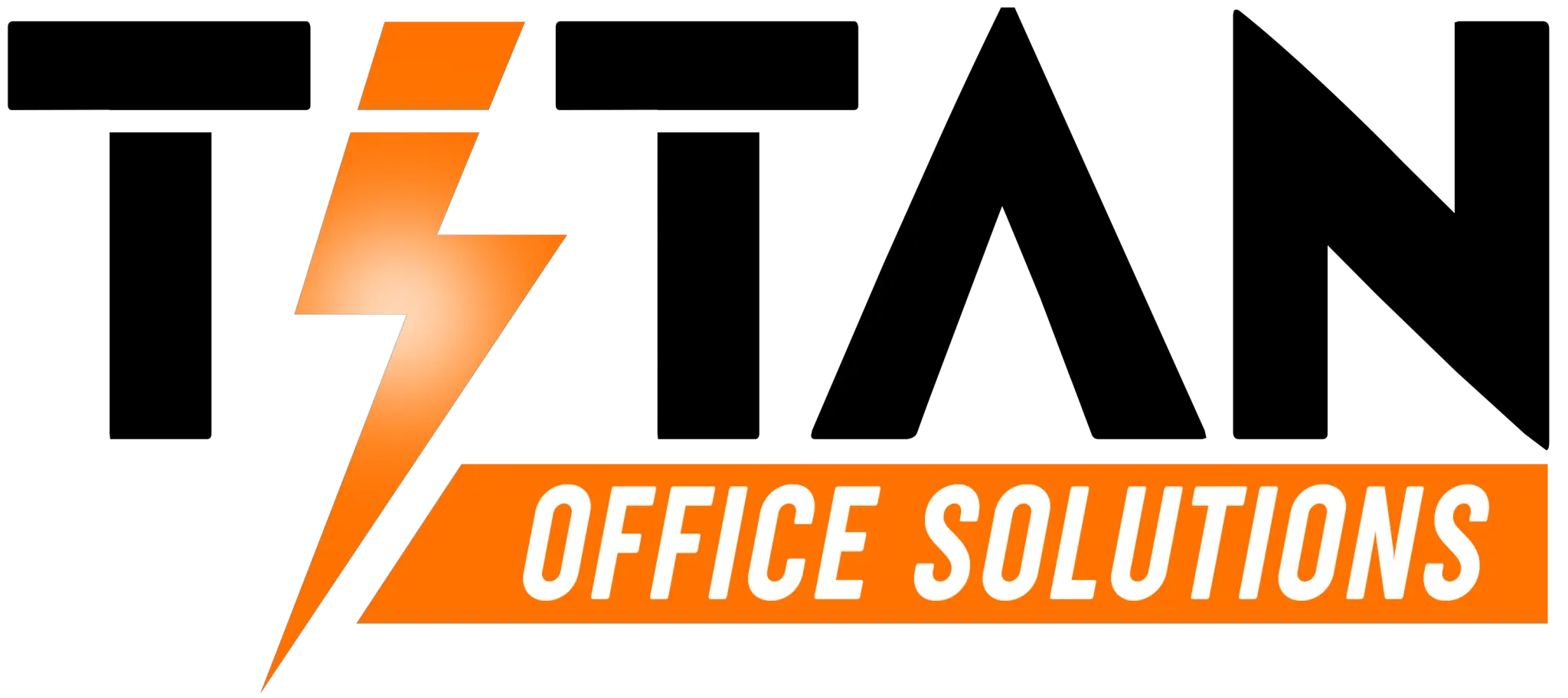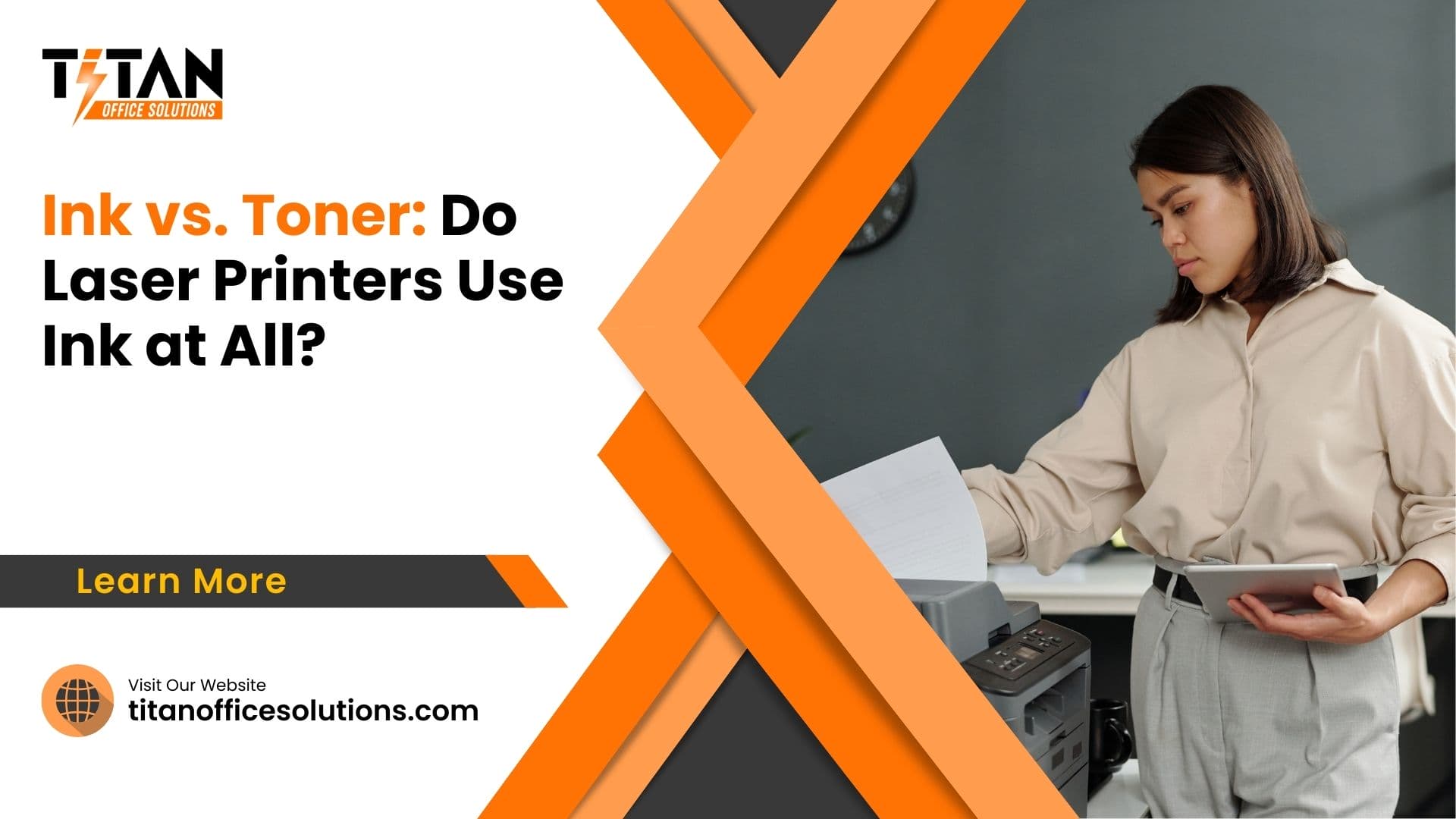Do Laser Printers Use Ink
As a seasoned printer technician, the question “Do Laser Printers Use Ink?” often echoes through the workshop. The confusion between ink and toner not only disturb the average printer user but also sparks a debate among tech-savvy folk. To unravel this enigma, understanding the fundamental difference between the two becomes critical. While ink resides in the domain of inkjet printers, toner is important of laser printers, a contrast as stark as black and white.
Laser printers, contrary to popular belief, do not use ink. Instead, they rely on toner, a fine powder that bonds to paper under the influence of heat. The next time you hear the hum of a laser printer at work, know that it’s the toner creating magic, not ink.
Understanding Ink and Toner
Ink is a liquid medium used by inkjet printers, contained within an ink cartridge. Alternatively, toner is a fine powder, an essential part of a toner cartridge, crucial for color laser and monochrome laser printing.
The choice between an inkjet or laser device can be like navigating a complex, but understanding the difference can help determine which type of printer is best for you.

When you think of a printer brand like HP, the ink used in their printers is often highly specialized, designed with specific dyes or pigments to ensure the best possible print quality. So, if you’re contemplating buying a new printer, understanding this vital part of the printer could greatly influence your decision.
The printer works by melting the toner powder onto the paper. The advantages of using a laser printer instead of an inkjet include a lower cost per page and a higher pages per minute rate. However, the initial cost of purchasing a laser printer, particularly color laser printer models, could be higher.
Advantages and Disadvantages of Ink and Toner
When looking for a printer, understanding the difference between inkjet and laser technologies becomes crucial. Inkjet printers, a common choice, use liquid pigment, providing a wide range of colors, ideal for photo inkjet printers. However, they usually have a lower page yield than toner offerings.
On the flip side, laserjet printers, powered by toner, excel in speed, making them a reliable option for heavy-duty use. Yet, laser printers are significantly more expensive upfront. So, should one get an inkjet printer or a laser machine? The printer is right depends on how one plans to use the printer.
Inkjet Printer Pros and Cons

Pros:
- Lower upfront cost: Inkjet printers are generally cheaper than laser printers.
- Better for photos: Inkjet printers can produce high-quality photo prints, with good color accuracy and detail.
- More compact: Inkjet printers tend to be smaller and lighter than laser printers.
- Less likely to smudge: Since inkjet ink dries quickly, it’s less prone to smudging compared to toner.
- Easier to replace cartridges: Replacing ink cartridges is usually a simple and straightforward process.
Cons:
- Higher ink cost per page: Ink cartridges can be expensive, and they don’t tend to last as long as toner cartridges.
- Slower printing: Inkjet printers can be slower than laser printers, especially for large printing jobs.
- Can clog if not used regularly: If you don’t print often, the ink cartridges can dry out and clog the print head.
Toner Printer Pros and Cons
Pros:
- Lower cost per page: Toner cartridges may be expensive upfront, but they last much longer than ink cartridges, resulting in a lower cost per page.
- Faster printing: Laser printers are generally much faster than inkjet printers.
- Sharper text: Laser printers produce crisp, sharp text that is ideal for business documents.
- Toner doesn’t smudge: Toner is applied with heat, so it bonds with the paper and is less likely to smudge.
- Durable prints: Laser toner prints are more resistant to fading and water damage compared to inkjet prints.
Cons:
- Higher upfront cost: Laser printers are generally more expensive than inkjet printers.
- Larger size: Laser printers tend to be bigger and heavier than inkjet printers.
- Not ideal for photos: While some laser printers can print decent photos, the quality typically isn’t as good as what you’ll get from an inkjet printer.
- Toner can be messy: Toner powder can be messy if you spill it during cartridge replacement.
Cost Comparison of Ink and Toner
The cost disparity between ink and toner cartridges can be quite significant. Examining options like a brother laser printer or a laser printer would reveal that laser printers can also be a cost-effective choice.
Inkjet printers are usually more expensive to maintain due to the cost of ink. In contrast, the cons of laser printers, such as higher upfront costs, can be offset by cheaper toner over time. So, whether one decides to use an inkjet printer or opt for a laser or inkjet printer, it’s essential to consider both initial and ongoing costs.
Laser Printers and Ink
In printing technology two prominent players exist – laser and inkjet printers; each with unique mechanics of operation. The question of whether a laser device utilizes fluid pigments naturally arises, and the answer lies in its unique process.
Conversely, inkjet printers come equipped with a reservoir filled with liquid colorants. However, the mechanics of operation in laser printers and inkjet printers differ significantly. Predominantly, an inkjet printer uses liquid colorants to create vivid images, while a laser device is faster than inkjet counterparts, due to its intricate process. Thus, printers come with distinct, fascinating technologies.
Do Laser Printers Use Ink?
A question often posed is whether these devices, which function on the principle of static electricity, employ the use of dye or pigment-based fluids. The straightforward response is no. These devices depend on a finely milled substance known as toner, which is electrically charged.
Unlike the wet fluid used in other printing devices, toner is essentially a dry powder. As such, it creates sharp, crisp images and text on paper. The utilization of this powder in these high-speed devices proves to be an efficient and high-quality method for generating prints. This is particularly true for large volumes, where the clarity of each print remains consistently high.
How Does It Work?
When it comes to the operation of these printing devices, a fascinating process unfolds. In machine, a photosensitive drum is charged with electrostatic energy. A beam of light then projects the image onto the drum, selectively discharging areas to form an electrostatic template of the image. The powdered pigment, a material far removed from the fluidic medium used by its counterpart, is magnetically attracted to the charged areas of the drum, creating a visible image.
The image is then transferred onto paper through heat and pressure, permanently fusing the pigment to the paper fibers. This process results in sharp, vibrant prints, highlighting the brilliance of this technology.
Choosing the Right Printer
Upon choosing the right printing device, several factors must be contemplated. Understand the difference between pigment-based or dye-based fluid utilized for creating images. Consider the machine’s operating mechanism, whether it employs a light beam or sprays droplets onto the page. Assess the consumables required – powdered pigment or fluid reservoirs.
Contemplate the image or text quality, speed, and operating costs. For large scale operations, machines that use powdered pigment are more economical, while for detailed, colorful prints, those spraying droplets work best. Review these factors carefully to select the most suitable printing device.
What to Consider when Buying a Printer
Venturing into the realm of equipment acquisition, the next stop is the labyrinth of printer selection. Contemplating this pivotal choice, consider the volume of paperwork typically produced and the importance of colour versus monochrome output. Weight the convenience of a compact design against the necessity for high-speed performance.
The decision should be made after evaluating the quality of output needed in terms of detail and resolution. Assessing the device’s capability to handle different media sizes and types could also be pivotal. Pondering the connectivity options could be another decisive move. The efficiency of integrated duplex printing could potentially be a game changer. It’s about finding the perfect balance between functionality, quality and budget.
Ink or Toner?
An integral factor in the decision-making process revolves around the choice between fluid dyes and dry particles. Liquid dyes, commonly found in the reservoirs of the classic desktop press, offer vibrant colors and sharp detailing, ideal for high-quality image reproduction. They require regular replenishment, a consideration for those with high-volume demands.
On the other hand, dry particles, the lifeblood of the modern electrostatic press, boast longevity and economy. They offer a solution for high-volume textual document production, but compromise on the vibrancy of colours.
A careful evaluation of these aspects can guide individuals towards the most suitable printing technology for their specific requirements.
Conclusion
In the world of printing technology, the distinction between coloring material used by different devices may seem insignificant. Yet, the impact on output quality, operating costs, and overall performance of the machine is considerable. The nuances of pigmented liquids and powdery substances underline the importance of making well-informed choices.
Understanding these differences is crucial when deciding on the most suitable printing method. The choice should reflect the requirements of the tasks at hand, the desired quality of the output, and the overall budget. As printing professionals, the goal is to provide the most efficient and cost-effective solutions for every printing challenge.
Titan Office Solutions
Phone: (704) 741-0821
Email: info@titanofficesolutions.com
Hours of Operations: Monday through Friday from 8:30 AM to 6 PM EST.
Website: titanofficesolutions.com

